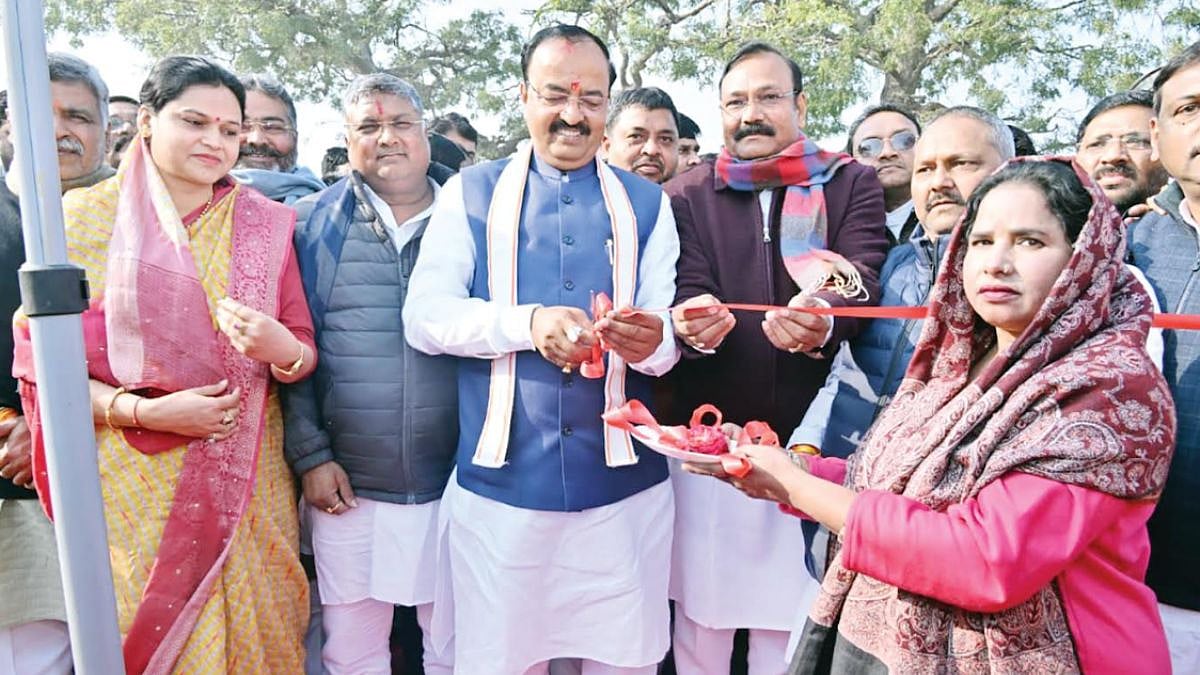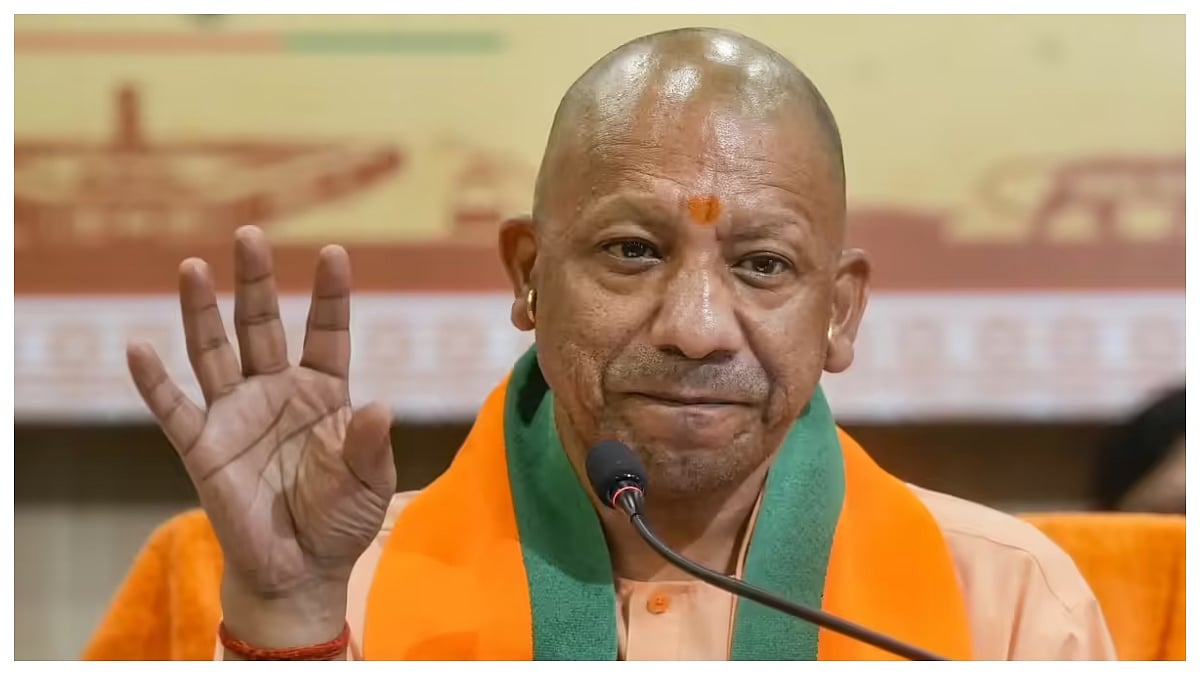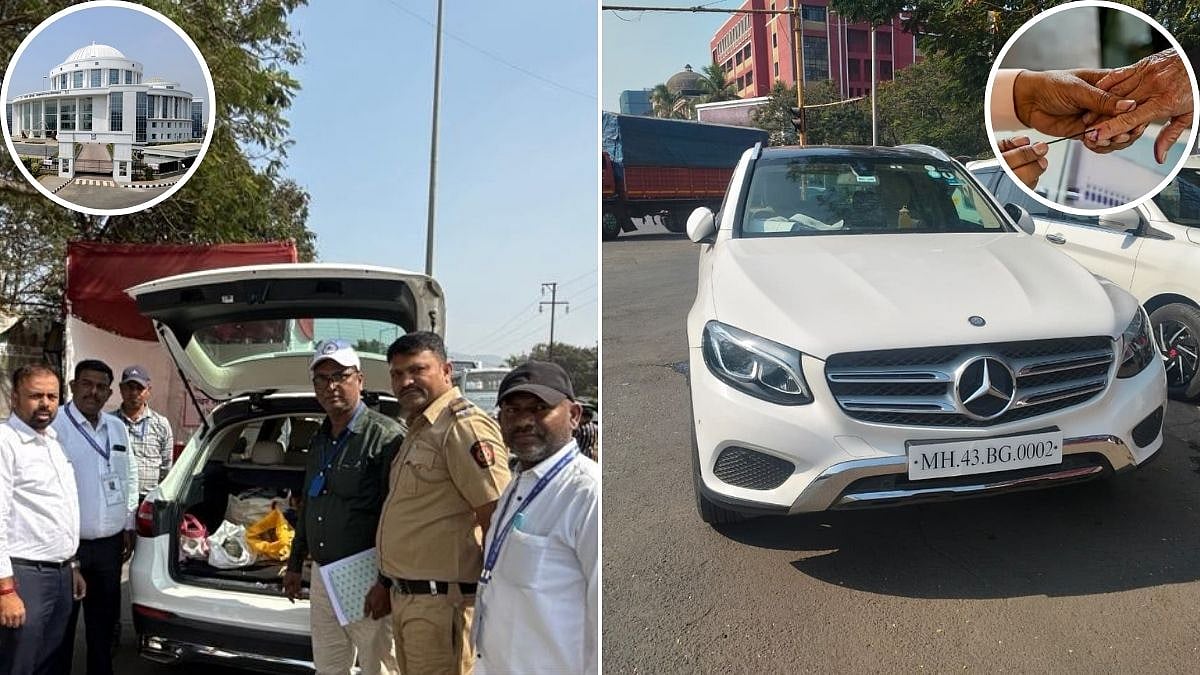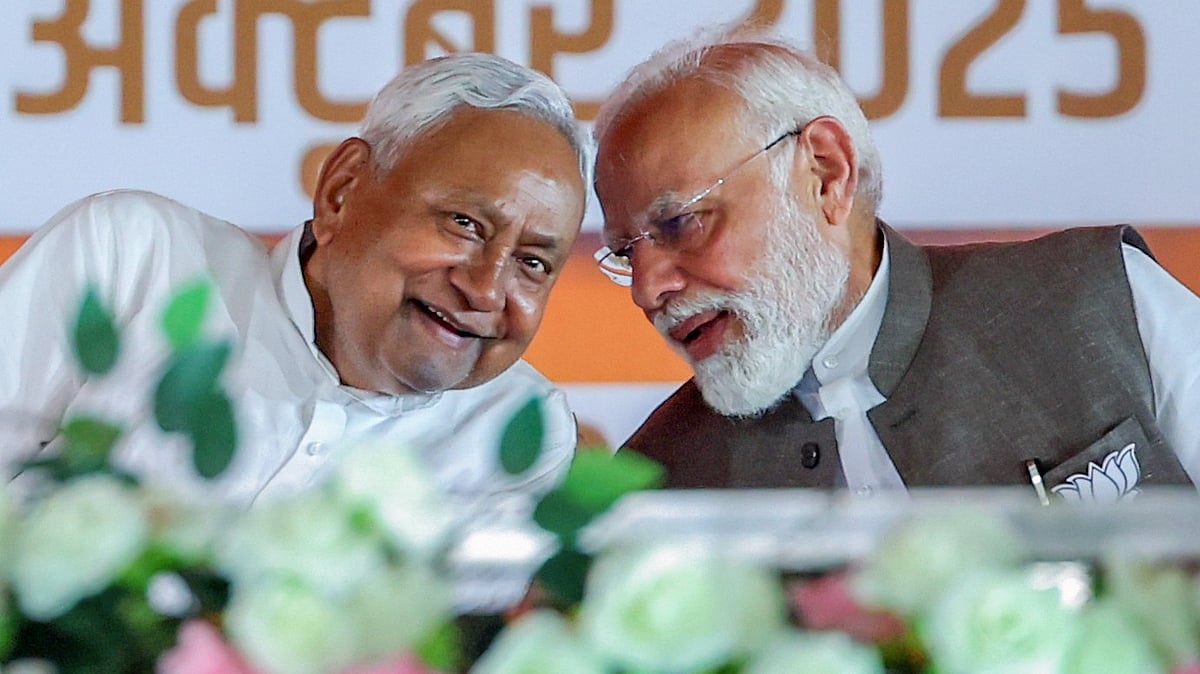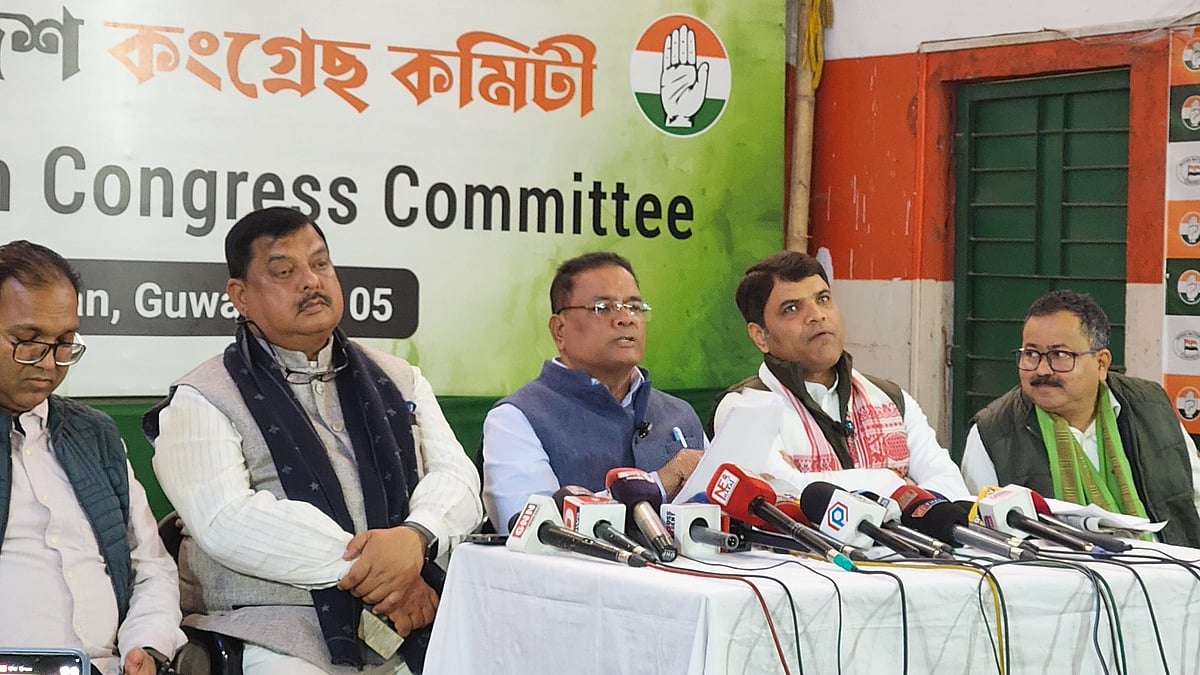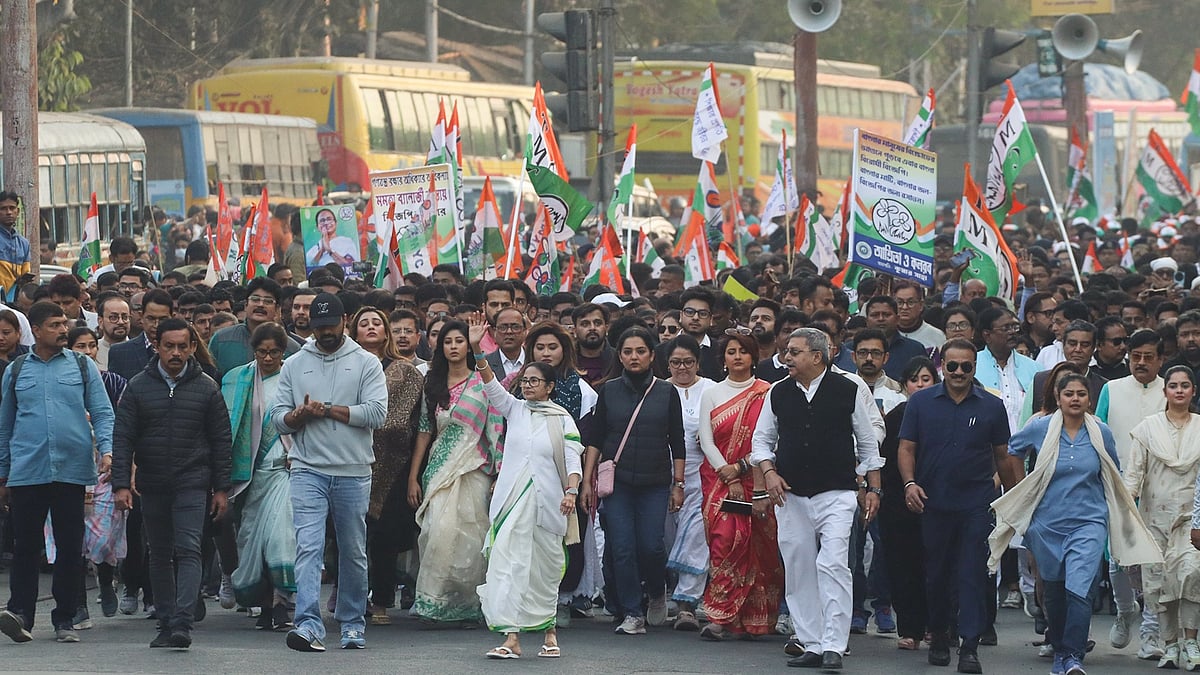Guru Hargobind was born at Wadali village on 19 June 1595 and was the only child of Guru Arjan Dev. From a young age he was educated in the sciences, sports and religion as his father had insisted.
He was invested with the Guruship on 25 May 1606 just days before his father’s martyrdom by Emperor Jahangir and was the sixth of the Ten Gurus of Sikhism.
While the ceremonial rites were being performed by Baba Buddha Ji, Guru Hargobind Ji asked Baba Buddha to adorn him with a sword rather than the Seli of Nanak which had been passed down on each successive Guru since Guru Nanak.
Baba Buddha, never having handled a sword before, placed it on the wrong side of the Guru. Guru Hargobind noticing this, asked for another sword saying "I'll wear two swords, a sword of shakti (power) and a sword of bhakti (meditation)."
Guru Hargobind then put on not one but two swords; one on his left side and the other on his right. He declared that the two swords signified "Miri" and "Piri", "Temporal Power" and "Spiritual Power". One would be to deliver a powerful blow to the oppressor and the other would protect the innocent. He told his followers: "In the Guru's house spiritual and temporal powers shall be combined".
Guru Hargobind Ji was also the inventor of the Taus. Guru Ji watched a peacock singing one day, and wished to make a instrument to mimic the same sound as the peacock, so the Taus was invented.
Guru Hargobind carried the same light of Guru Nanak; but he added to it the quality of the sword.
His purpose was not to mix religion with politics, but to take up the cause of the exploited and defend them against the oppression of the rulers.
Thus, Guru Hargobind clearly separated religion and politics.
After the tolerant days of Akbar, his son Jahangir had demanded that Islam control the politics of the Mughal Empire. The religion of the ruling classes oppressed the people, using the shield of religion.
The Sixth Guru, Guru Hargobind Ji occupies a special place in Sikh history because, after Guru Arjan Sahib Ji's martyrdom, he gave a new direction to the course of events. Along with his spiritual authority, he exercised temporal authority too by expounding the concept of Miri and Piri (the temporal and the spiritual). In Indian history the advent of Sikhism and the establishment of the Mughal Empire took place at the same time.
Guru Nanak and the four Gurus that followed expounded peace, equality and freedom for all. It was only after the death of Guru Arjan that it became all too clear that a defensive military stance might be required to bring this about. Injustice, oppression and exploitation were the order of the day. The scourges of caste divisions, religious discrimination and superstitions was making life into a living hell for the ordinary person. The oppressors and the oppressed were both Muslims and Hindus.
Guru Hargobind Singh Ji used both the powers of worship and of the sword to fight this oppression. After the death of Guru Arjan Dev Ji, it became clear that Sikhs needed to incorporate armed and martial training in order to defend themselves and those in need. Up until this point, Sikhs had been relatively safe from persecution.
Guru Arjan Dev Ji’s arrest, torture, and martyrdom signified a shift in the political sentiment toward Sikhs. While previous Gurus could emphasize spiritual teachings, Guru Arjan Dev Ji knew his son would also have to protect and direct the Sikhs in matters of state and security.
He sent a Sikh messenger to his young son, Guru Hargobind Ji, saying, "Let him sit fully armed on his throne and maintain an army to the best of his capacity."
Guru Hargobind Ji excelled at this mission. He maintained a highly esteemed court (Darbar) and was phenomenal in all matters of state. He acquired and trained 700 horses, 300 horsemen, 60 gunners, and 500 infantry. He built the Fortress of Steel (Lohgarh) in Amritsar and instructed the construction of a thundering drum (nagara) which was used to communicate.
He personally fought alongside the army as Mughal forces, during the reign of Shah Jahan, repeatedly attacked the Sikhs in Amritsar, Kartarpur, and elsewhere. His strength and skill in battle inspired courage in his fellow Sikhs and began the legacy of Sikh warriors.
Guru Hargobind constructed the Akal Takht (God's throne) in front of Harmandir in 1606. He sat on a raised platform of twelve feet, attired in princely clothes. The Harmandir Sahib was the seat of his spiritual authority and the Akal Takht was the seat of his temporal (worldly) authority. This marked the beginning of Sikh militarisation. To the symbols of sainthood were added marks of sovereignty, including the umbrella and the Kalgi. Guru Hargobind administered justice like a King and awarded honours and meted punishment, as well. The Akal Takht was the first Takht in the history of the Sikhs. According to Cunningham: "The genial disposition of the martial apostle led him to rejoice in the companionship of a camp, in the dangers of war, and in the excitements of the chase".
Guru Hargobind Ji established Congregational prayers adding to religious fervour among his Sikhs, but also strengthened their unity and brotherhood.
Guru Hargobind sent his Sikhs to far away places such as Bengal and Bihar to preach Sikhism. Guru Hargobind allowed Udasis to preach Sikhism but did not admit them to Sikhism. In his private life Guru Hargobind never abandoned the true character of Guru Nanak, whose successor he was and whose teachings he spread to the world.
Alarmed by the rapid growth of the Sikhs under the guidance of Guru Hargobind Ji, those who wished ill-upon the growing Sikh community, joined hands with the rulers of Lahore and traveled to Delhi to voice their complains against Guru Hargobind to the power brokers in the Mughal court and to Jahangir himself. They told Jahangir that Guru Hargobind Sahib was gathering an army and amassing arms, with the intension of avenging his father's death. They advised him to suppress Guru Ji and the growing Sikh community immediately, but rather than sending an army to attack or arrest him, Jahangir summoned the Guru to Delhi to assess his character and aims, but rather than the hoped for confrontation and arrest of the Guru (that his ill-wishers had hoped for) a surprising thing happened when both the Emperor and his powerful wife were taken by Guru Ji's charm, grace and Godliness. A friendship and mutual respect soon followed, Guru Hargobind, would even hunt with the Emperor on his grand Shikars. On one remarkable occasion the young Guru saved the life of the Emperor, who he could have easily hated for the death of his father, by jumping between a Lion and the Mughal ruler.
Seeing their scheme to harm Guru Ji going awry and growing fearful of his developing friendship with the Emperor, Chandu Shah used an illness of Jahangir to have the court astrologers predict that only a Holy man praying at a shrine at Gwalior Fort, for a lengthy time, would lead to the Emperor's recovery. Moved equally by his personal jealousy as well as by superstition and the predictions of his court astrologers, Jahangir ordered the Guru to be imprisoned at the Gwalior fort.
Though his Sikhs were worried that he would meet the same fate as his father the Guru himself was never worried over his release. The famous Muslim Pir Hazrat Mian Mir was among those who reminded Jahangir, who had long since gotten over his illness and seemingly forgotten about the Guru's confinement in the Fort, to release the Guru. The Guru's immediate release was ordered, but Guru Ji refused to leave the fort unless the fifty-two Princes who had long languished under confinement, at the fort, were released as well.
Jahangir cleverly agreed that the Guru could take as many of the prince to freedom, as could hold onto the Guru's clothing. Guru Ji had his darzi (tailor) prepare a coat with 52 ribands or tails and left the fort with the fifty-two rulers trailing behind him, each holding onto a piece of the Guru's coat. That is why Guru Ji is referred to as the Liberator (Bandi-chor) in history. Bandi Chhorh Divas is celebrated in honor of the day.
When Guru Ji reached Amritsar his Sikhs lit lamps to welcome him. His arrival also coincided with the traditional Indian festival of Diwali. Since then the festival of Diwali (lighting of lamps) is celebrated as Bandi-Chor diwas by Sikhs.
From Amritsar he went to Lahore where Kaulan, adopted hindu daughter of Kazi Rustam Khan and a follower of Saint Mian Mir came into contact with the Guru due to her dire plight. Guruji asked her to move to Amritsar, where she led a pious life. On Guru Ji's command, Baba Budha Ji had Gurdwara Kaulsar built in Kaulan's memory in 1681 of Bikrami calendar. On the invitation of Sikhs of central India he also travelled there where he had Gurdwara Nanak Matta completed. Later he visited Kashmir and secured many followers there. From Jammu and Kashmir, he returned to Punjab via Gujrat.
Jahangir could not tolerate the armed policy of Guru Hargobind and consequently imprisoned him. The main reason for leaving him after years was that there were a lot of reports from across the length and width of the country that people were against the throne due to the popularity of the Guru, as well as the unjustified martyrdom of the fifth Guru. A lot of people were following Sikhism, and there was a possibility of a coup if the Guru was not relieved at the earliest. As it is, there were 52 Hindu kings in the Gwalior prison at that moment, the policies of Jahangir against the local majority people were oppressive in nature. Therefore, the situation compelled him to order release of Guru Hargobind and save the throne.
During the reign of Shah Jahan, relations became bitter again, for Shah Jahan was intolerant. He destroyed the Sikh baoli at Lahore. The quarrels which originally started over hawks or horses between Mughal officials and the Sikhs subsequently led to risings on a large scale and were responsible for the deaths of thousands of persons on both sides. Battles were fought at Amritsar, Kartarpur and elsewhere. He defeated the Imperial troops near Amritsar. The Guru was again attacked by a provincial detachment, but the attackers were routed and their leaders slain. Guru Hargobind grasped a sword and marched with his devoted soldiers among the troops of the empire, or boldly led them to oppose and overcome the provincial governors or personal enemies.
Immediately following the battle Guru Hargobind and his family left Kartarpur to retire to the out of the way town of Kiratpur in order to avoid further bloodshed. Here the Guru had also promised to visit a Muslim devotee of his Budhan Shah who was near death and had previously met Guru Nanak. The Gurus grandson Dhir Mal refused to move, instead he remained in Kartarpur and with possession of the original copy of the Granth Sahib which he refused to hand over. Dhir Mal had aspirations of succeeding Guru Hargobind as the next Guru because he had the Holy Granth.
Here are Kiratpur Guru Hargobind remained the rest of his life peacefully. He kept a small army of men and 900 solders as his protection. The Guru continued to receive countless devotees who flocked to Kiratpur to hear and see the Guru and Sikhism continued to spread throughout the Indian Subcontinent. The most accurate eye witness account of Guru Hargobind's life appears in the Dabistan-i-Mazahib written by the Muslim Mohsin Fani. In this he writes about the Sikhs, "The Guru believes in one God. His followers put not faith in idol worship. They never pray or practice austerities like the Hindus. They believe not in their incarnations, or places of pilgrimage nor the Sanskrit language which the Hindus deem to be the language of the gods. They believe that all the Gurus are the same as Nanak. The Sikhs are not restricted in the matter of eating and drinking."
Soon the Guru received the shocking news of the death of his eldest son Baba Gurditta who passed away at age 24. He passed in much the same manner as Atal Rai, having taken to heart the reprimand of the Guru for reanimating a dead cow of an angry farmer which he had accidentally killed while out hunting. Guru Hargobind was much saddened by the death of his son and requested his grandson Dhir Mal to appear for his fathers last rites and receive his fathers turban. Dhir Mal refused to come even on such a solemn occasion, only caring about styling himself as the next Guru, especially now with his fathers untimely demise.
Guru Hargobind now started training his grandson Har Rai the other son of Baba Gurditta as his natural successor. The Gurus own sons; Gurditta had passed away, Suraj Mal and Ani Rai were too worldly while Tegh Bahadur preferred solitude and meditation. Har Rai was a pious young man and Guru Hargobind proceeded to train him in the use of arms as well as spiritual matters. At the age of fourteen Har Rai was ordained by Guru Hargobind as the seventh Sikh Guru. Guru Hargobind bowed before Guru Har Rai as his successor. Soon thereafter Guru Hargobind passed away on 28 February 1644 having in his lifetime transforming the Sikhs into soldier-saints.


